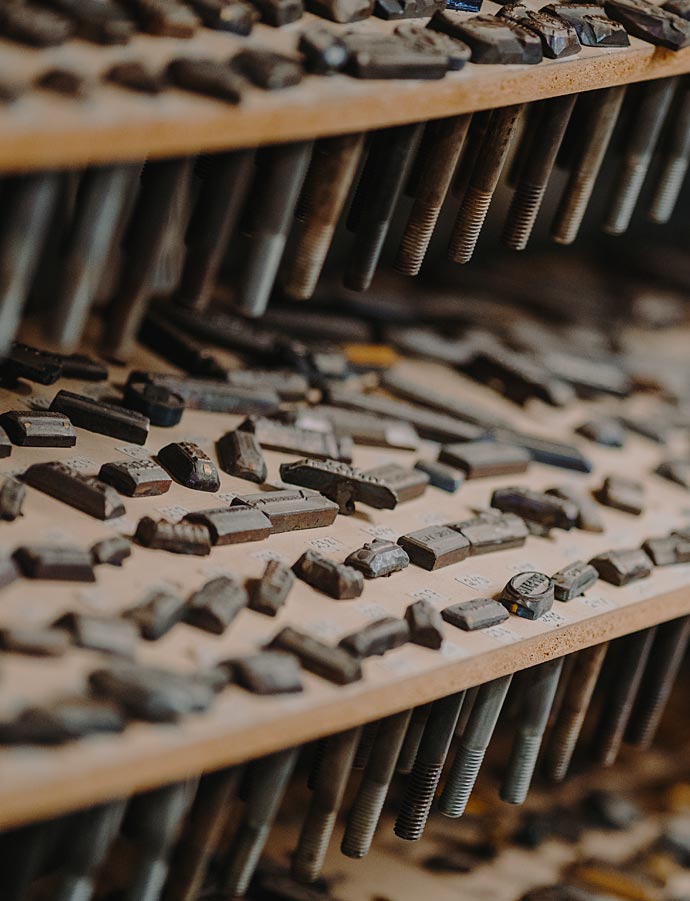
The original scout knife was designed in 1925, introduced to the market just in time for Christmas. It was created at the request of British scouts, who wanted an international-looking knife model suitable for scouts worldwide. The design required a sturdy finger guard and a distinctive shape from traditional Nordic knives, as well as a secure fastening mechanism to prevent the knife from falling out of the sheath.
The shape of the carbon steel blade was inspired by traditional U.S. models. The handle consists of leather discs punched out from excess material from sheath production, made of domestic vegetable-tanned cowhide. The handle is coated with lacquer. Between the blade and handle is a 3 mm thick aluminum guard that effectively prevents fingers from slipping onto the blade. The top cap, or hook, is cast from aluminum, with a design based on the wooden end of the Whittle Knife, developed in 1921.
The sheath is stitched all around and made from either undyed natural leather or dark brown dyed domestic vegetable-tanned leather. The sheath features metal reinforcement at the mouth and tip. The top of the sheath has a snap-fastened leather strap to securely hold the knife in place. The sheath is decorated with a subtle, traditional stamped pattern in the same color as the sheath.
Our scout knives are available in four different sizes, all with the same shape, handle, and sheath style but with different blade lengths. The Kolkka Scout knife is essentially the same as the Children's Scout Knife but has a slightly longer blade that is sharp all the way to the tip. This model is suitable for younger users who already have some experience using a knife.
The Kolkka Scout knife measures 20 cm, with the knife itself being 19 cm, of which the blade is 10 cm.
The carbon steel blade requires some maintenance, as it should always be cleaned and dried after use, and a layer of oil should be applied to protect against corrosion. We recommend leaving the knife outside the sheath to dry for a day or two after use, allowing the sheath to dry properly as well. Before leaving the factory, we protect the blades with tar-scented CRC Sisu oil. Other similar products, like WD-40 and CRC 5-56, also work well. If you are handling food with the knife, it's best to protect the blade with food-safe oil, such as sunflower oil. However, food oils are not suitable for long-term storage, as they become sticky over time.
Scout knives are prone to corrosion because the leather of the sheath presses against both sides of the blade. If the knife is left in the sheath while wet, black spots will start to appear on the blade, and if it remains in a damp environment for longer, rust will form. The spots do not necessarily affect the knife's functionality, but they can be removed fairly well with metal polishes like Autosol.
Total length: 20 cm, knife length: 18,5 cm, blade length: 9 cm
Weight: 100 grams
Handle material: Cow leather, aluminum
Blade material: Polished carbon steel
